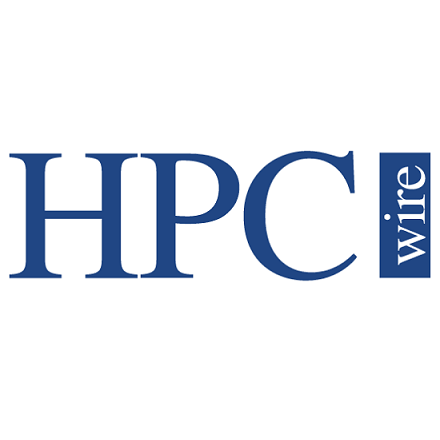
Xyratex Captures Oracle’s Lustre
February 21, 2013
With the announcement this week that storage maker Xyratex has acquired Oracle's Lustre assets, the popular open source parallel file system is once again completely under the control of HPC stakeholders. Read more…

Intel Expands HPC Collection with Whamcloud Buy
July 16, 2012
Intel Corporation has acquired Whamcloud, a startup devoted to supporting the open source Lustre parallel file system and its user community. The deal marks the latest in a line of high performance computing acquisitions that Intel has made over the past few years to expand its HPC footprint. Read more…

Lustre Vendors Consider File System’s Future
November 22, 2011
Thanks to the efforts of many in the HPC community, Lustre appears to be here to stay. We contacted three leading Lustre vendors about what lies ahead for the popular HPC open source file system, asking Xyratex Storage Software Director Peter Bojanic, Whamcloud CEO Brent Gorda, and Terascala Marketing and Product Management VP Rick Friedman for their perspectives on what Lustre needs for broader commercial use as well as how it can make its way into the world of exascale supercomputing. Read more…

The State of the Lustre Community
August 1, 2011
A year ago the Lustre community was stunned by Oracle's message at the 2010 Lustre User Group (LUG). Lustre was no longer a vendor neutral platform; you had to buy Sun/Oracle storage hardware to get future versions of the software. The community uproar was strong to the threat HPC's most popular file system going away. Read more…

Why Lustre Is Set to Excel in Exascale
June 27, 2011
Exascale computing will bring new challenges to supercomputing, not the least of which is the need for file systems to handle greatly increased I/O loads. To satisfy these I/O demands, should the HPC community start from scratch or build out from current file system technologies? Evolutionary or revolutionary is the key question. Read more…

Xyratex Unveils Lustre Storage Appliance for HPC
June 14, 2011
Storage maker Xyratex has announced the ClusterStor 3000, a rack-scale Lustre storage solution purpose-built for high performance computing. The product is the culmination of an effort that began with the aquisition of Lustre startup ClusterStor in 2010. We asked Xyratex Director of Strategic Business Development Ken Claffey to fill us in on his company's newest storage solution. Read more…

HPC Startup Takes a Shine to Lustre
July 29, 2010
Lustre, the much-beloved open-source file system technology used by many of the top supercomputers in the world, has a new friend. Actually a whole new company. Whamcloud, a venture-funded startup based in upscale Danville, California, came out of hiding on Wednesday and announced its intentions to help carry the Lustre torch forward on Linux. Read more…

Google File System II: Dawn of the Multiplying Master Nodes
August 12, 2009
Search giant working on a GFS makeover. Read more…

- Click Here for More Headlines

Whitepaper
Transforming Industrial and Automotive Manufacturing
In this era, expansion in digital infrastructure capacity is inevitable. Parallel to this, climate change consciousness is also rising, making sustainability a mandatory part of the organization’s functioning. As computing workloads such as AI and HPC continue to surge, so does the energy consumption, posing environmental woes. IT departments within organizations have a crucial role in combating this challenge. They can significantly drive sustainable practices by influencing newer technologies and process adoption that aid in mitigating the effects of climate change.
While buying more sustainable IT solutions is an option, partnering with IT solutions providers, such and Lenovo and Intel, who are committed to sustainability and aiding customers in executing sustainability strategies is likely to be more impactful.
Learn how Lenovo and Intel, through their partnership, are strongly positioned to address this need with their innovations driving energy efficiency and environmental stewardship.
Download Now
Sponsored by Lenovo
Whitepaper
How Direct Liquid Cooling Improves Data Center Energy Efficiency
Data centers are experiencing increasing power consumption, space constraints and cooling demands due to the unprecedented computing power required by today’s chips and servers. HVAC cooling systems consume approximately 40% of a data center’s electricity. These systems traditionally use air conditioning, air handling and fans to cool the data center facility and IT equipment, ultimately resulting in high energy consumption and high carbon emissions. Data centers are moving to direct liquid cooled (DLC) systems to improve cooling efficiency thus lowering their PUE, operating expenses (OPEX) and carbon footprint.
This paper describes how CoolIT Systems (CoolIT) meets the need for improved energy efficiency in data centers and includes case studies that show how CoolIT’s DLC solutions improve energy efficiency, increase rack density, lower OPEX, and enable sustainability programs. CoolIT is the global market and innovation leader in scalable DLC solutions for the world’s most demanding computing environments. CoolIT’s end-to-end solutions meet the rising demand in cooling and the rising demand for energy efficiency.
Download Now
Sponsored by CoolIT
Advanced Scale Career Development & Workforce Enhancement Center
Featured Advanced Scale Jobs:
HPCwire Resource Library
HPCwire Product Showcase
© 2024 HPCwire. All Rights Reserved. A Tabor Communications Publication
HPCwire is a registered trademark of Tabor Communications, Inc. Use of this site is governed by our Terms of Use and Privacy Policy.
Reproduction in whole or in part in any form or medium without express written permission of Tabor Communications, Inc. is prohibited.
























